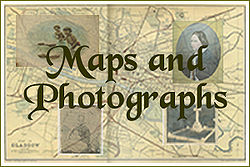Difference between revisions of "Maps and Photography"
Jessbowbag (talk | contribs) |
Jessbowbag (talk | contribs) |
||
| Line 125: | Line 125: | ||
*[http://www.picturethepast.org.uk/ Picture the Past-Derbyshire/Nottinghamshire Photo Archive and More] | *[http://www.picturethepast.org.uk/ Picture the Past-Derbyshire/Nottinghamshire Photo Archive and More] | ||
| − | *[http://www.derbyphotos.co.uk/ Quality photographs of Derby, Derbyshire and the Midlands | + | *[http://www.derbyphotos.co.uk/ Quality photographs of Derby, Derbyshire and the Midlands] |
| − | *[http://www.photo-ark.co.uk/ Photo Ark- Collection of Old UK Photographs, Postcards and Images] | + | *[http://www.photo-ark.co.uk/ Photo Ark- Collection of Old UK Photographs, Postcards and Images] |
*[http://www.staffspasttrack.org.uk/ Staffordshire Past Track] | *[http://www.staffspasttrack.org.uk/ Staffordshire Past Track] | ||
| Line 150: | Line 150: | ||
*[http://people.bath.ac.uk/lismd/dorset/churches/ Images of Dorset Churches] | *[http://people.bath.ac.uk/lismd/dorset/churches/ Images of Dorset Churches] | ||
| − | *[http://www.essexchurches.info/AtoZ.asp Essex Churches | + | *[http://www.essexchurches.info/AtoZ.asp Essex Churches A-Z] |
*[http://www.toxteth.net/places/liverpool/churches/index.htm Liverpool Churches] | *[http://www.toxteth.net/places/liverpool/churches/index.htm Liverpool Churches] | ||
Revision as of 18:51, 8 August 2009
Contents
Lloyd George's Domesday: a useful source c 1910
Valuation Office Records, popularly known as Lloyd George's Domesday are held at the National Archives.
This was a precursor of Capital Gains Tax. Tax would be paid on the increase in value of properties sold, so their values had to be calculated. Most were apparently done in the summer of 1914.
Every property in England & Wales was marked on a map, given a hereditament number and then the property described in a field book. The field books (in IR 58) each contain (up to) 100 properties and there are four standard preprinted pages for each property. You get owner, occupier, rental, a description of the property and value.
Not everything survives, of course, but where it does, you can find out if your ancestor was in a detached house or a terrace, what it was made of, who his or her neighbours were etc etc.
I've been to several talks, which all made research sound very complicated. The parish of Bury in Sussex stretches over 6 maps, so working from map to field book would be a long winded process, but there are only three field books (less than 300 properties) so you could go the other way round if looking for rural properties. The fieldbooks have references back to the maps, which are very large scale, often with coloured boundaries, so works of art.
It would be more difficult in a town, where you would have to be able to pinpoint a property on a map before you started, but town maps are very large scale.
We may not have census available for the period yet, but for those who can get to the National Archives at Kew, this would certainly help our understanding of pre WW1 ancestors.
Map Links
Maps: Tithe and Ordnance Survey
- About Britain The Locality of Towns and Every City in Britain, Their Distances from One Another & Other Information Within Those Towns and Cities.
- First Generation of 1:2,500 and 1:10,560 Scale Ordnance Survey Maps for England, Scotland and Wales.
- Your Old Books & Maps.... CD-Books for Historical, Military or Family Research.
Old London Maps
Photograph Links
Photographs General
Place Specific
Churches
Photographers
Directories of Victorian and Edwardian Photographers
- Genealogy Photos Search for Volunteer Photographers.
Back to Creating Your Family Tree
Back to Main Page
